Did you know overgrown trees are the second most common cause of outages in Manitoba? Trees caused more outages in 2024 than in any of the previous 14 years.
Because trees, bushes and other vegetation can cause big problems, starting this year we’re increasing our efforts to manage vegetation that may interfere with power lines and other infrastructure.
When tree branches grow too close to power lines, they can cause outages when they sway, break, or fall and take the power lines down with them. This also results in safety hazards for anyone nearby and our employees sent to fix them. Thick vegetation can also complicate repairs and restoration work: if trees and shrubs grow too thick around lines, poles, or congest power line rights of way, our crews have a harder time finding and reaching the problem.
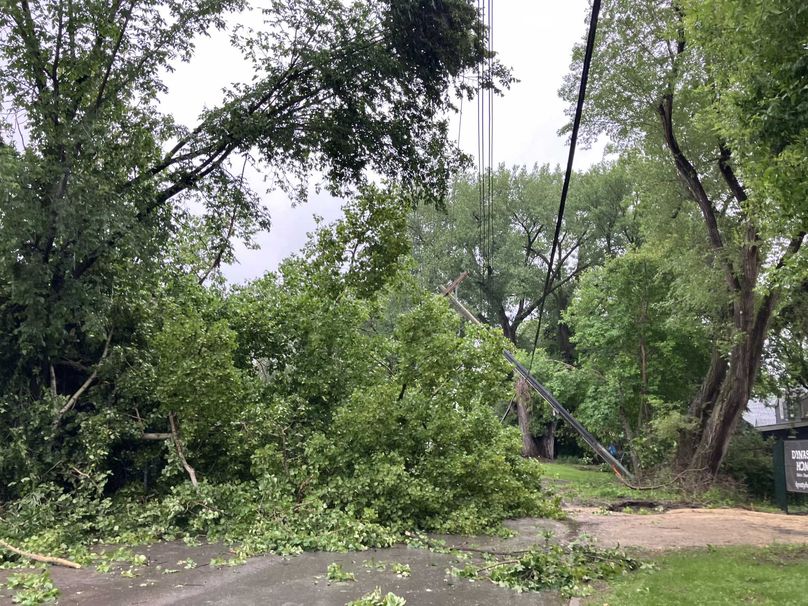
A pile of fallen tree branches in the foreground partially obscures a downed power pole and downed power lines.
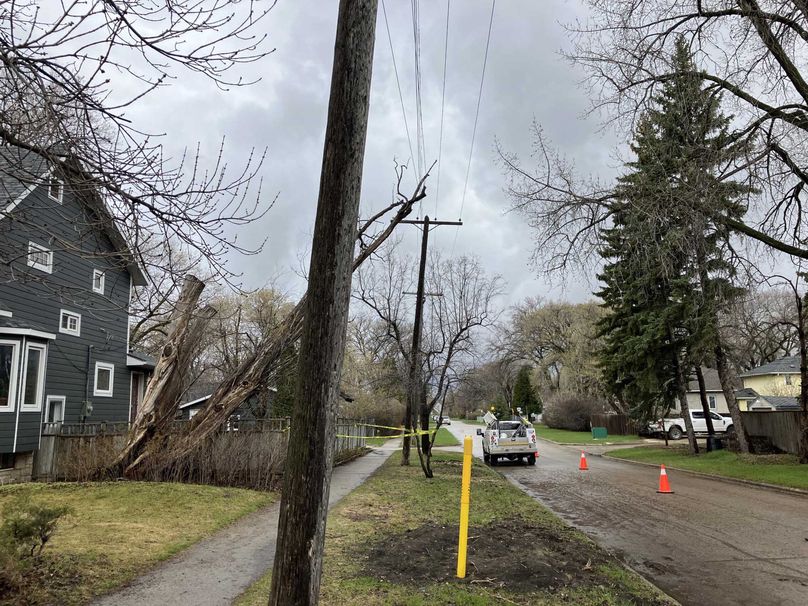
Enlarge image: A residential neighbourhood with a tree leaning far onto a power line.
With over 90,000 kilometers of power lines in the province, we need to take a balanced approach to tackle this issue and protect the equipment that brings power to all Manitobans.
There are three ways we manage vegetation: mechanical brush clearing, selective herbicides, and tree trimming.
Mechanical brush clearing uses big wheeled or tracked vehicles to mow branches and brush along power line right of ways (ROWs) to make it free of tall-growing vegetation. We do this primarily in rural areas that are too overgrown for selective herbicides and tree trimming. These machines are large and can throw debris, so if you see one in action, don’t approach it and stay away from the work site. Anywhere we’re doing mechanical brush clearing will have signage posted.
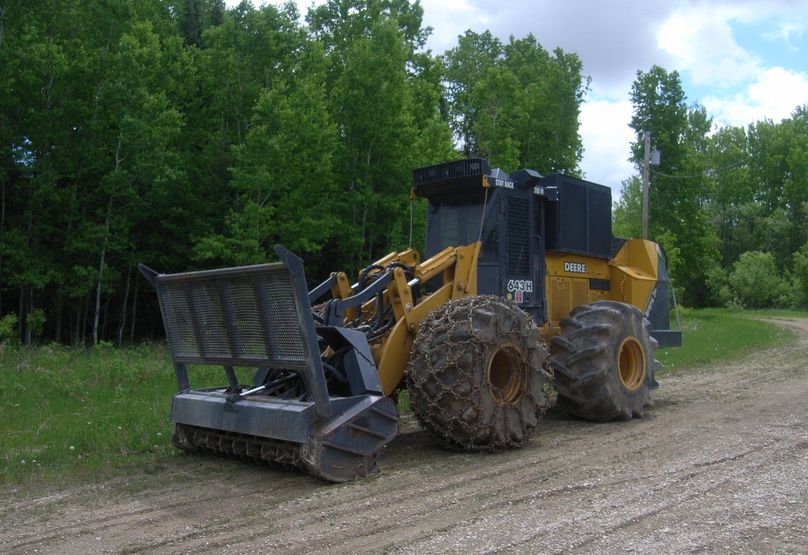
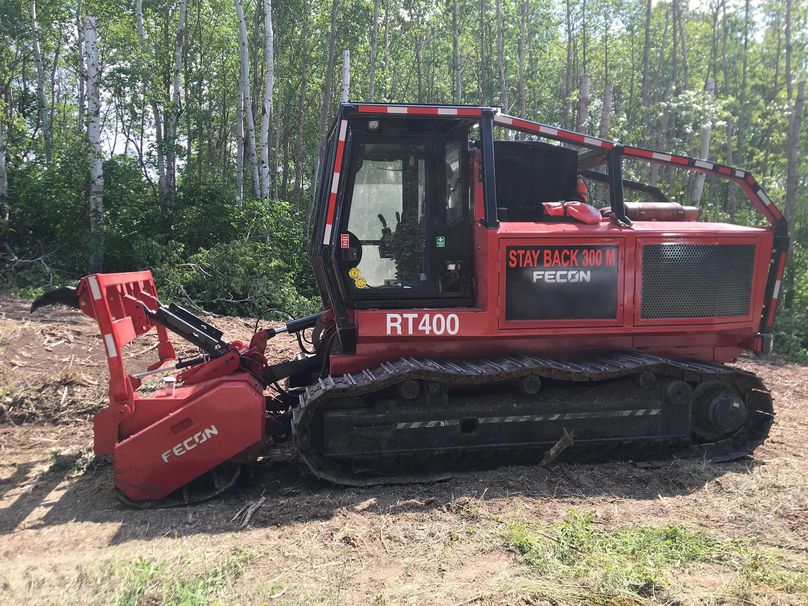
One year after we mechanically clear an area, we come back and apply selective herbicides to specific types of problem trees. These herbicides allow grasses and shrubs to regrow, but they prevent tall-growing species of trees from growing into power lines and threatening safety and power reliability. Using these herbicides means our crews can avoid returning to clear the same areas more than once. All the herbicides we use are registered products in Canada under the Pest Control Products Act and are approved for use on our Pesticide Use Permit.
We may also trim trees. We contract this work to qualified utility arborists. Trees are trimmed and pruned around power lines rather than removing whole trees in urban areas. However, trees may need to be fully removed based on the species, location, and potential hazard it poses to the power line.
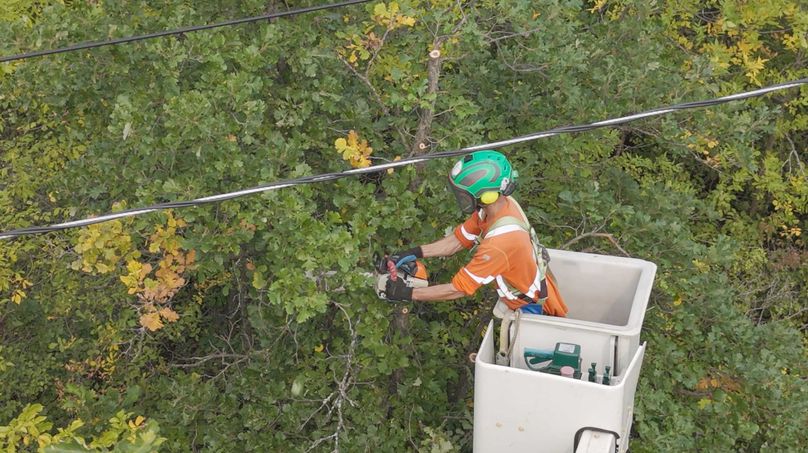
Enlarge image: A man in a bucket truck with a chainsaw trimming trees around power lines.
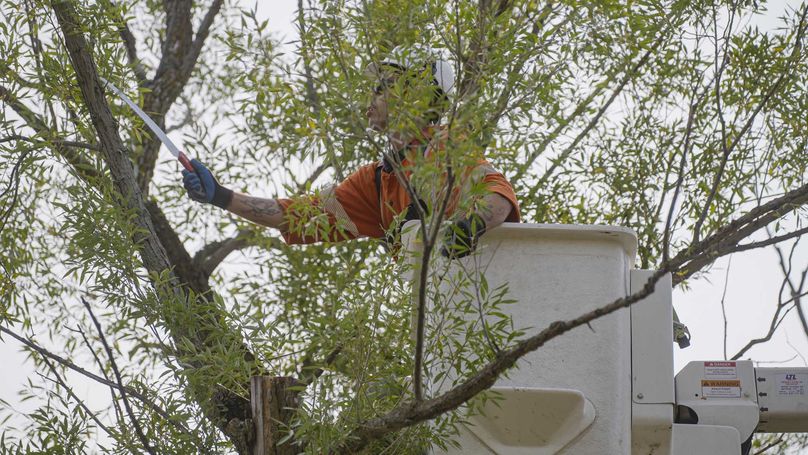
Enlarge image: A man in a bucket truck with a hand saw trimming trees around power lines.
In general, trees on your property are your responsibility. You should hire a qualified arborist to keep them away from power lines. If vegetation is causing or may soon cause a safety hazard or an outage, our crews may enter properties to do this work.
We love the trees throughout the province, but often they don’t co-exist well with power lines. Some species of tree just aren’t compatible with electrical infrastructure and can threaten the safety of Manitoba neighbourhoods and their power supply.
That’s why we use these methods of vegetation management: to keep you, your power, and our workers safe. Starting this year, it’s also why you might see us managing vegetation more often.
Learn more about our vegetation management practices.
As always, if you’re driving by a crew working, please keep a safe distance and slow down.



